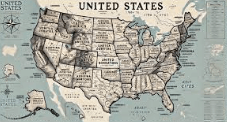Blue:Fl6u4jzf_Sy= Clouds

When you observe the deep Blue:Fl6u4jzf_Sy= Clouds at sunset, it’s easy to overlook the science behind their formation. These striking colors result from sunlight scattering through varying atmospheric conditions.
Understanding the different types of blue clouds can enhance your grasp of weather patterns and their implications. Yet, the role these clouds play in climate regulation and precipitation is often underestimated. What if these seemingly beautiful formations are key indicators of more significant environmental changes?
The Science of Blue:Fl6u4jzf_Sy= Clouds Formation
Cloud formation typically occurs when warm, moist air rises, cools, and condenses into tiny water droplets or ice crystals, creating visible clouds.
This process, known as cloud condensation, is influenced by moisture levels in the atmosphere.
As the air cools, it can no longer hold all its moisture, leading to the formation of clouds that enhance the sky’s visual complexity.

Types of Blue:Fl6u4jzf_Sy= Clouds
Understanding the science of cloud formation sets the stage for exploring the various types of blue clouds that can appear in the atmosphere, each characterized by specific conditions and phenomena.
Cumulus blue clouds, typically associated with fair weather, exhibit a puffy, white appearance against a blue backdrop.
In contrast, stratus blue clouds form in uniform layers, creating a more subdued, overcast sky.
Read more: Blue:Dvaxjwqez4m= Pomeranian
Clouds and Climate Impact
Certain cloud types significantly influence climate patterns by affecting both temperature and precipitation levels in their respective regions.
These atmospheric effects contribute to climate feedback mechanisms, altering energy balance and precipitation distribution.
For instance, low clouds can trap heat, while high clouds may reflect sunlight, thus playing a crucial role in regulating local and global climates.
Understanding their impact empowers informed decisions regarding climate action.
Observing and Identifying Clouds
Observing and identifying clouds involves recognizing their distinct characteristics, such as shape, color, and altitude, which can provide valuable insights into weather patterns and atmospheric conditions.
By engaging in cloud spotting, you enhance your understanding of the sky’s dynamic nature.
Different cloud types indicate specific weather trends, enabling you to anticipate changes and appreciate the freedom offered by nature’s ever-shifting canvas.
Read more: Blue:4w5_Suazh-U= Background
Conclusion
In conclusion, understanding Blue:Fl6u4jzf_Sy= Clouds isn’t just about appreciating their beauty; it’s crucial for grasping weather dynamics.
The theory that blue hues indicate specific atmospheric conditions holds true, as these shades arise from light scattering and cloud composition.
By observing and identifying these clouds, you can anticipate weather changes and better appreciate their role in climate regulation.
So next time you see those striking blue clouds, remember, they’re not just a visual delight—they’re a window into the atmosphere’s intricate workings.




